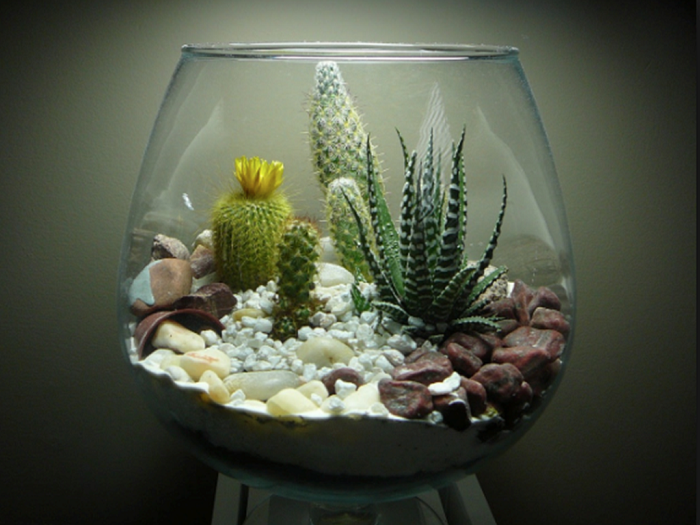
Terrariums | Want to know how to make a terrarium? You’ve come to the right place!
Terrariums are a great way to add greenery to your home, especially if you live in a small space, want to brighten up a shelf or dark corner, or don’t have a garden.
Not only are terrariums low maintenance (unlike some house plants), but they’re also incredibly fun and easy to make yourself. You could even make the terrarium below in an afternoon and give it as a gift.
Want to give terrarium making a go? We’ve pulled together everything you need to know about terrariums and asked the experts at Dobbies Garden Centre to share their top tips for making, and maintaining, a beautiful DIY Christmas terrarium.
What is a terrarium? And how do terrariums work?
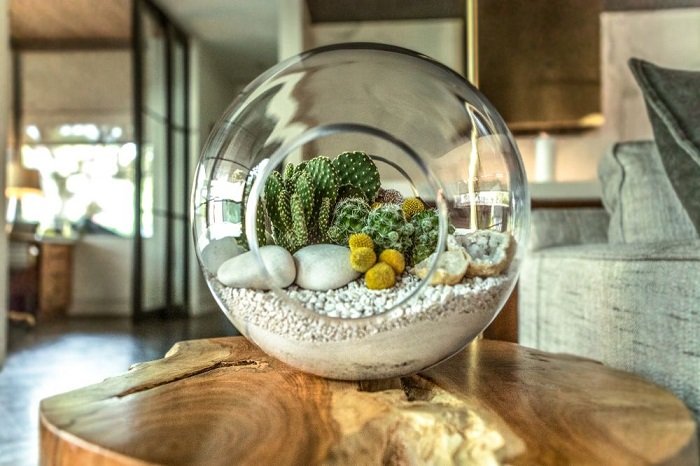
Terrariums are basically mini tabletop gardens or mini greenhouses housed in transparent glass and filled with moisture-loving plants.
Terrariums were invented by accident by physicist Nathanial Bagshaw Ward in Victorian times. He was investigating moths when he discovered sealed glass containers provided just the right humidity for tropical ferns to grow and flourish, with little fuss from gardeners.
This is because the plants and soil in sealed terrariums create their own eco-system by releasing water vapour. This collects on the walls and trickles down to provide the plants and soil with essential moisture.
Modern terrariums often have openings just large enough for their owners to tend to the plants inside. They contain a mixture of potting soil and small stones or gravel.
Which plants are best for terrariums?
Traditional sealed terrariums, or terrariums with a lid, are good for plants that need humid, rainforest-like conditions like ferns, moss and woody plants such as ivy.
Modern terrariums provide drier conditions and access to air, so work for cacti, succulents and air plants.
Whether you want to make a sealed or open terrarium, you need to use plants that are small enough for your glass container. You don’t want anything that will overgrow, or to cramp the container with too many plants.
Everything you need to fill your terrarium
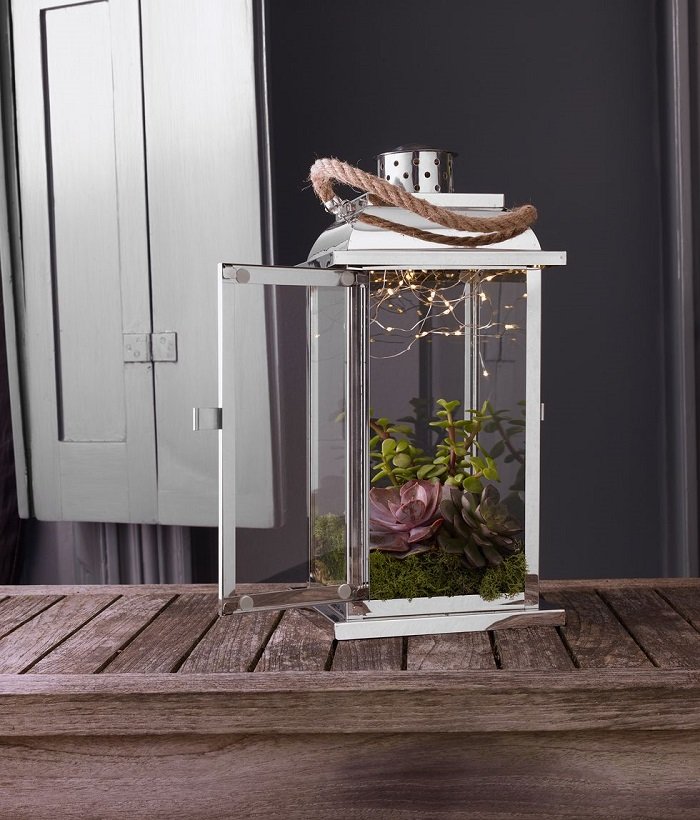
Which containers are best for terrariums?
Traditional terrariums are made from sealed glass bottles, or a special terrarium case with a dipped opening.
You could also make your own terrarium container from a fish tank, fish bowl or glass vase. In the tutorial from Dobbies below, the terrarium is made from a repurposed lantern.
How to make a Christmas terrarium
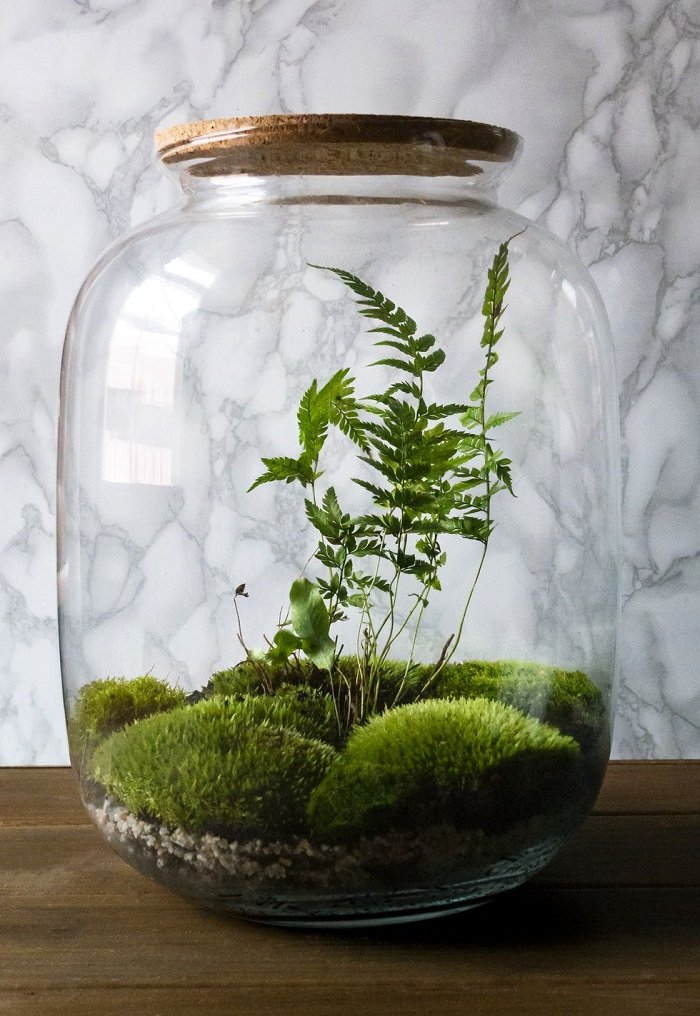
You will need:
- An empty lantern or other glass vessel (the one pictured is from Dobbies)
- A selection of mini succulents
- Moss or decorative pebbles
- Fine gravel or grit
- Compost suitable for cacti and succulents
- Hand trowel and small watering can
- Seasonal decorations
- Battery powered fairy or micro lights
- Place a layer of gravel or grit in the base of your terrarium. This will allow water to drain away. Push the gravel up at the back to create some height and form a sloping hill. Next add about an inch of cactus compost, which is fast draining and won’t retain much moisture.
- Using a small watering can, water the soil very lightly. Be careful not to over water as this can cause the roots of the succulents to rot.
- Plant your succulents, choosing taller plants to add height at the back and work your way forwards, arranging your succulents as you go. Space them nicely so they are not too overcrowded. Make sure the roots are covered in soil, adding a little extra to stabilise them if needed.
- Top-dress the terrarium with some moss or decorative pebbles, adding your festive touches. Try taping or gluing battery-powered fairy lights to the roof of the lantern to give your terrarium a subtle glow.
I came across an excellent gardening site specializing in succulents, cacti, mini gardens and terrariums. It is a Brazilian website called MUNDO NATURARTE. Access and learn more about it. It has great tips, CLICK HERE.
I will also leave a link to a specific article on Naturarte terrariums, Check out.
Also, get to know your YouTube Channel.
It will soon be translated into English.
I take this opportunity to thank Fabiana O.
Molina, creator of Naturarte for Support.
I hope you can enjoy and plunge headlong into this beautiful world of Terrariums!
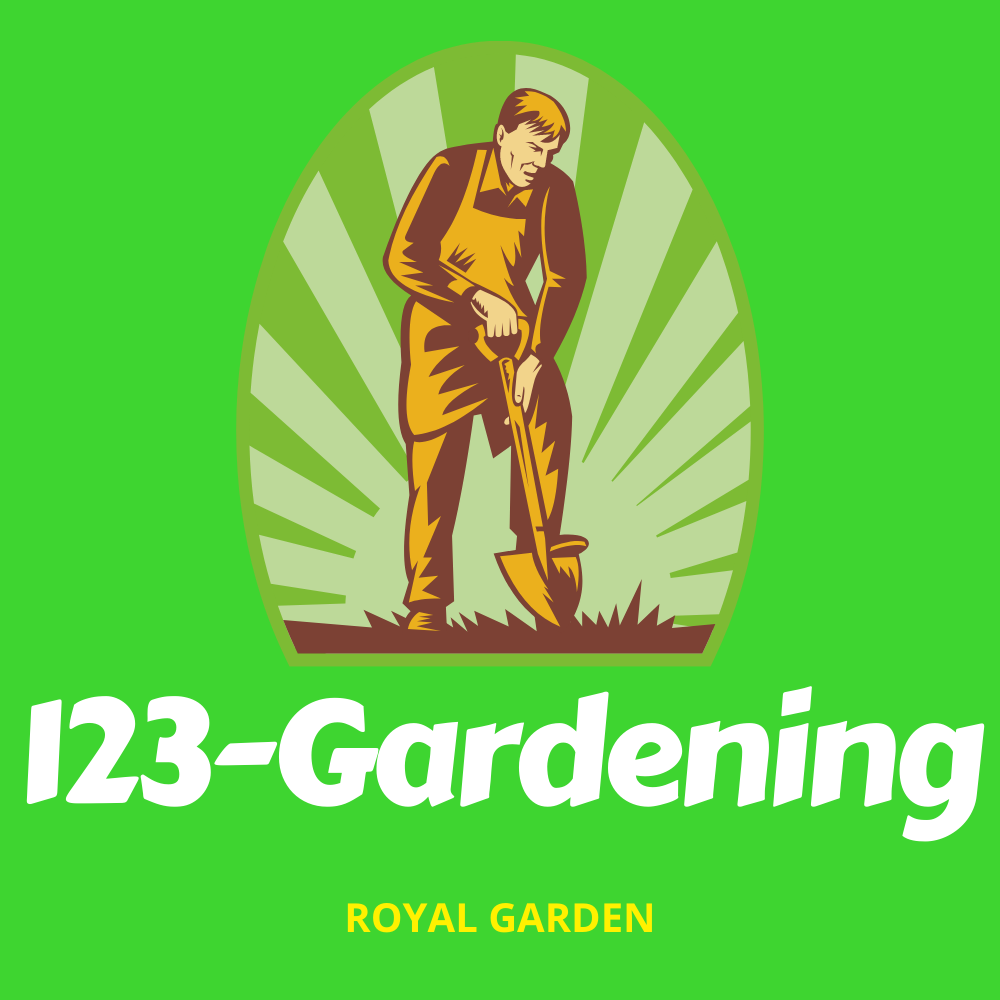
Link permanente
Thank you for your affection and success to everyone in 123-gardening!
https://mundonaturarte.com.br